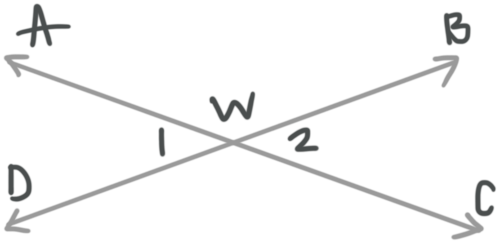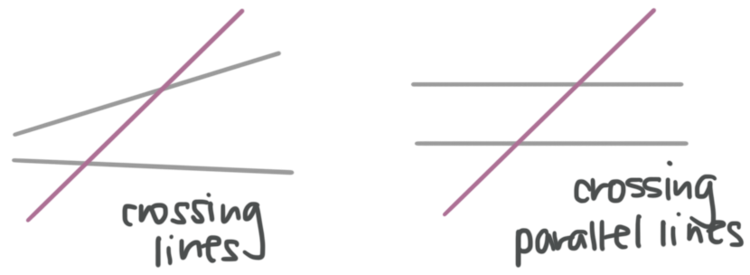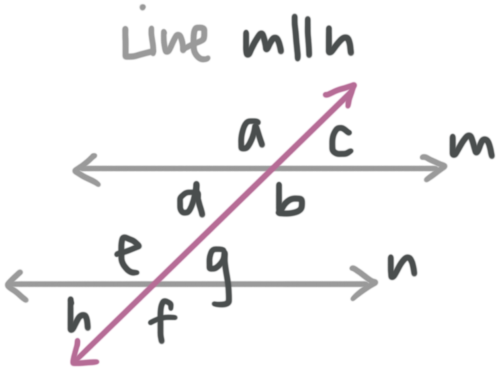Angle is a fraction of a circle. The measure of an angle is the size of the “turn” (rotation) that’s needed to get from the ray that forms one side of the angle to the ray that forms its other side.
Supplementary angles are angles which have measures that add to 180
Adjacent angles are angles that:
- share a vertex and one ray/side
- their interiors don’t overlap

Non-adjacent angles are angles that:
- may or may not share a vertex,
- but they don’t share a ray or even if they share a ray their interiors don’t overlap

Transversal
/transversal line - напречна линия/
Transversal is a line that corsses at least two other lines.

Transversal crossing parallel lines
Properties of transversal crossing parallel lines.

“Special” Congruent Angles
- Vertical angles -
- they share a vertex, but lie on the opposite sides of both the parallel lines and the transversal. - Corresponding angles -
- are matching angles that lie, one on each parallel line, on the same side of the parallel lines and the same side of the transversal. - Alternate interior angles -
- are angles that lie, one on each line, on opposite sides of the parallel lines and opposite sides of the transversal, inside of the parallel lines. - Alternate exterior angles -
- are angles that lie, one on each line, on opposite sides of the parallel lines and opposite sides of the transversal, outside of the parallel lines.
”Special” Supplementary Angles
- Consecutive interior angles -
- are angles that lie, one on each parallel line, on opposite sides of the parallel lines, but on the same side of the transversal. - Adjacent angles -
- are angles with the same vertex that lie on opposite sides of the parallel line, but on the same side of the transversal.
N-gons
The sum of angles in an n-gon is
Polygon Exterior Angle Sum Theorem: If a polygon is a convex polygon, then the sum of its exterior angles (one at each vertex) is equal to 360 degrees.